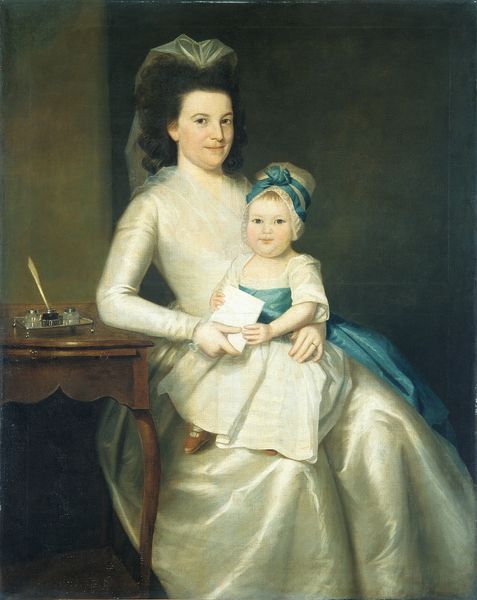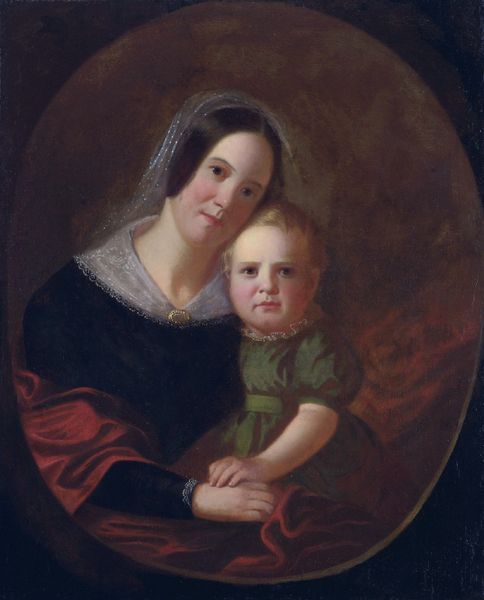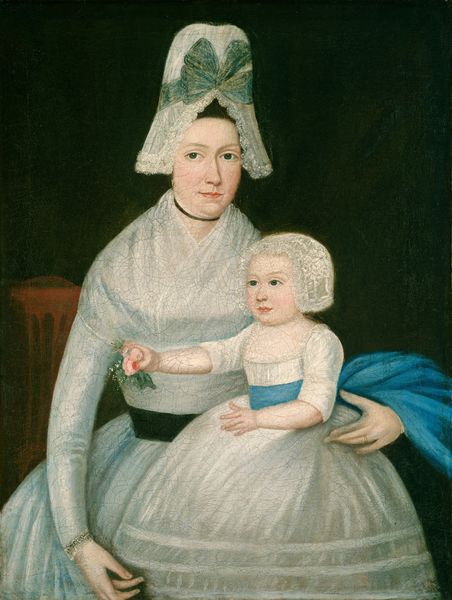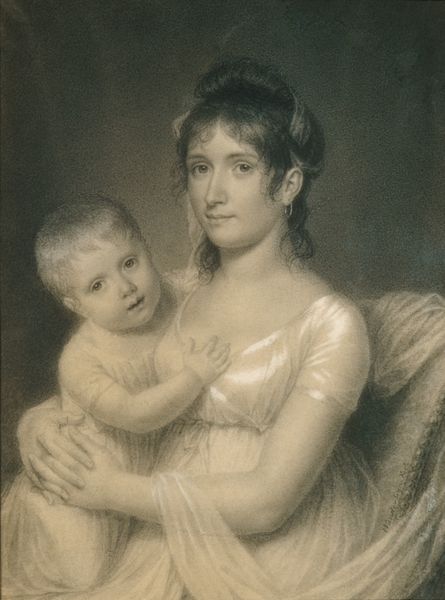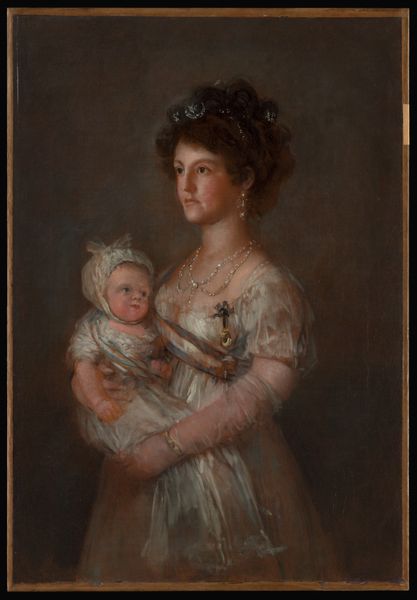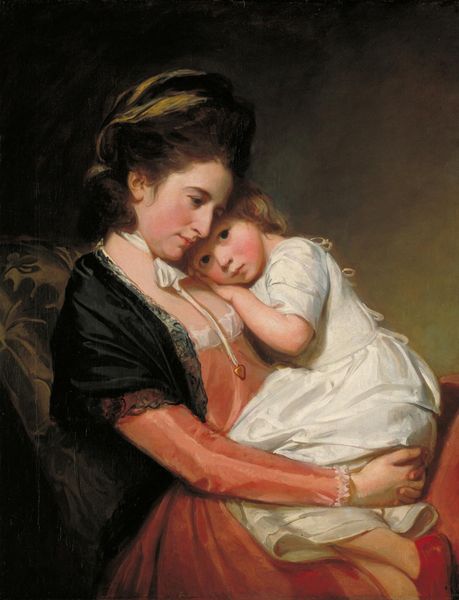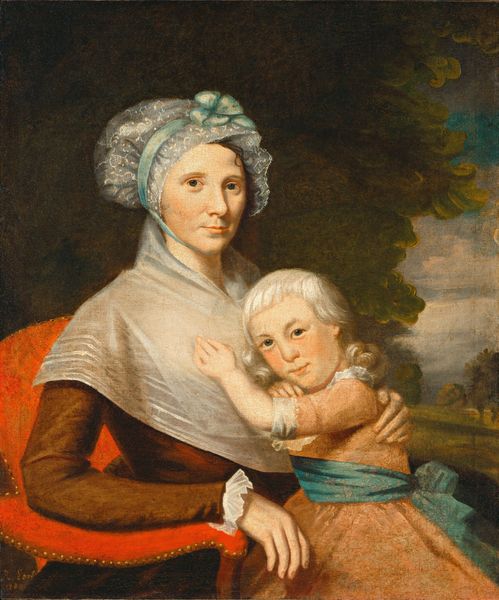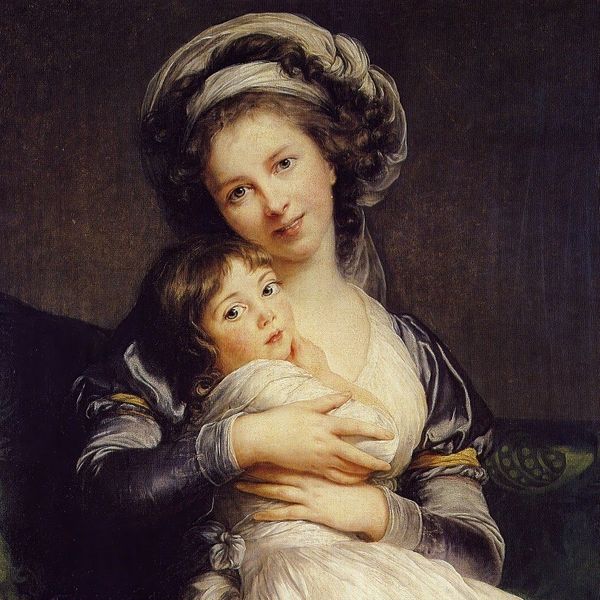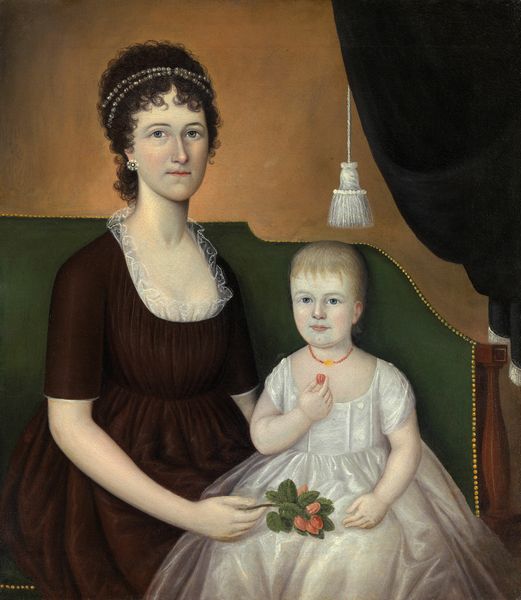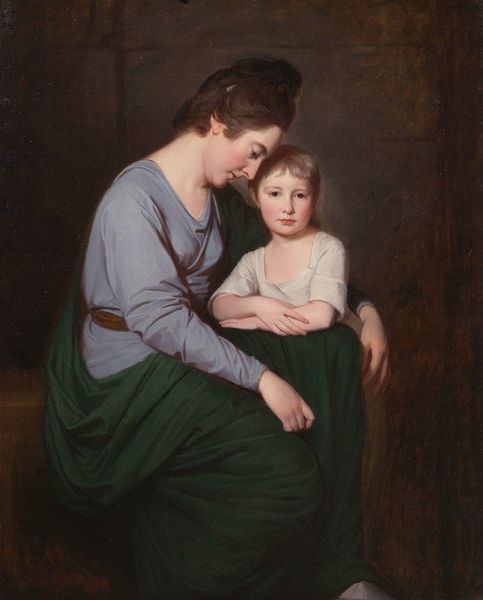
Mrs. Marinus Willett and Her Son Marinus, Jr. 1799 - 1802
0:00
0:00
painting, oil-paint
#
portrait
#
painting
#
oil-paint
#
academic-art
#
italian-renaissance
#
realism
Dimensions: 36 7/8 x 28 1/8 in. (93.7 x 71.4 cm)
Copyright: Public Domain
Curator: Looking at Vanderlyn's "Mrs. Marinus Willett and Her Son Marinus, Jr." is like stepping back into a world of quiet elegance. It’s a portrait bathed in stillness, painted between 1799 and 1802. Oil paint whispers tales of the era's fascination with capturing likeness, don't you think? Editor: It certainly whispers, but for me it shouts "restraint". Everything feels carefully placed, almost… posed. Do you get the feeling that even breathing too loudly might shatter the composition? It's striking, certainly, but I feel a disconnect. Curator: Well, it's academic art finding its voice in America, trying to marry Renaissance ideals with burgeoning American identity. Vanderlyn aimed to dignify his subjects, elevate them to a certain… social position through representation. Consider how this portrait embodies the public roles available to women then. Editor: That seriousness feels a bit… suffocating, to be honest. I am drawn to the intimacy suggested by the pairing. Look at the way the mother gazes. What is revealed when considering ideas around idealized maternity and civic identity in Early America? Is this maternal display intended to soften the edges of ambition, domesticating it within acceptable parameters? It’s like Vanderlyn is conducting a carefully orchestrated dance between affection and duty, isn’t it? Curator: Perhaps he captures her in-between spaces, where the public persona softened. I find a certain emotional transparency in her eyes. The slight unease suggests the pressures she experienced living at the dawn of a nation. Editor: Interesting point. It is true the painting's realism allows glimpses beneath the surface, I’ll grant you that. Those fragile fabrics and carefully modulated shadows also evoke an awareness of class... and an aspirational one at that. The muted tones create a calm backdrop to explore what the subject truly values. Curator: Yes. This composition and tone underscore social standing—it is very clear that Vanderlyn sought to give an ideal form of feminine power. But still, I keep circling back to the small human moment… it invites the public into a sense of maternal intimacy rarely visible at the time. What an intriguing painting. Editor: Intimate indeed. Vanderlyn truly gives his viewers so much to unpack, reflecting on historical realities and aesthetic priorities that feel strikingly pertinent today. Thank you for bringing this to light.
Comments
No comments
Be the first to comment and join the conversation on the ultimate creative platform.

